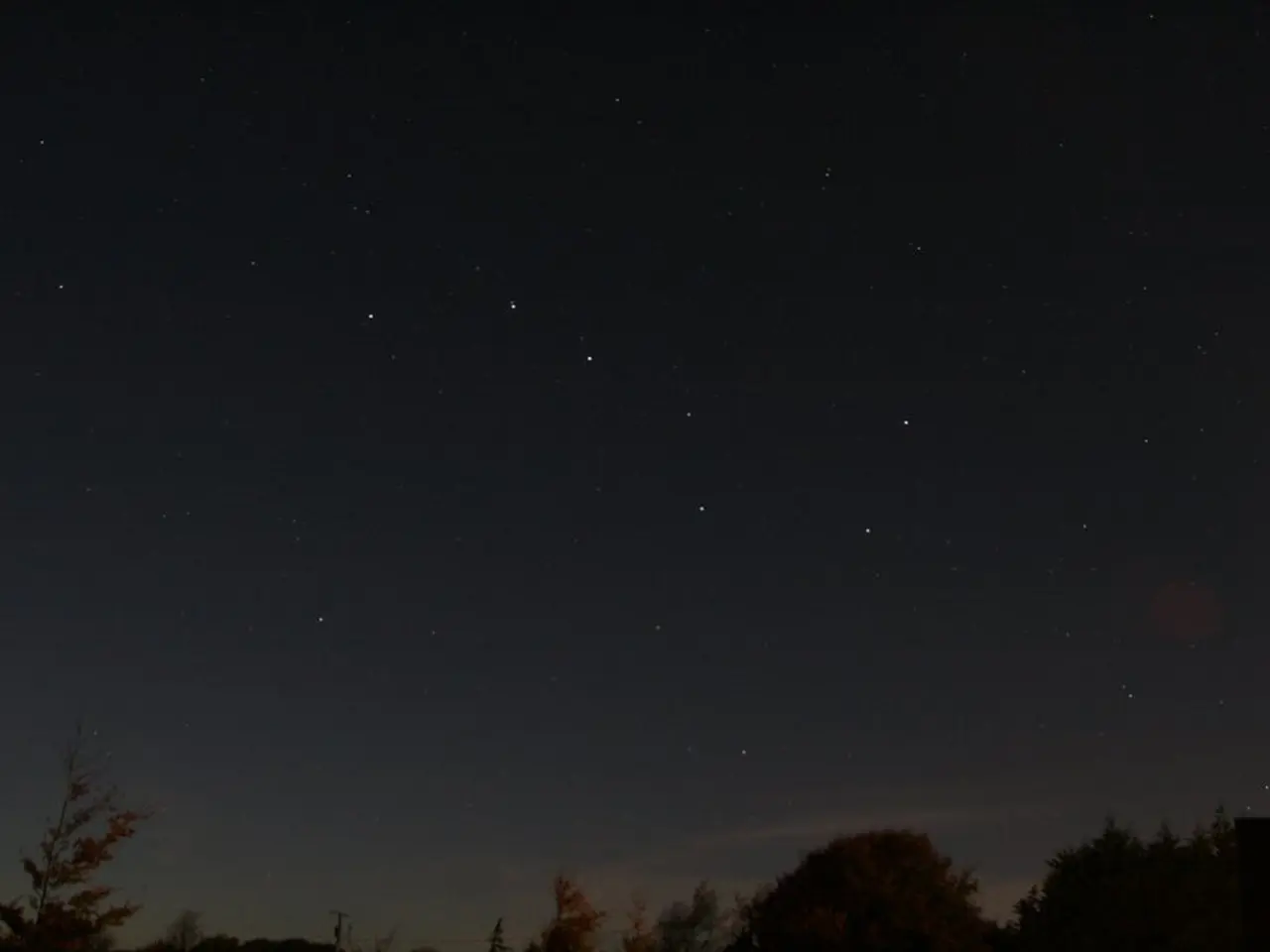astronomical discovery of colossal black hole estimated to have a mass equivalent to 36 billion suns, dubbed the 'cosmic behemoth'
In a groundbreaking discovery, scientists have unveiled the existence of a supermassive black hole, named LID-568, that is consuming matter at a rate over 40 times the theoretical limit, known as the Eddington limit. This colossal black hole, located five billion light-years away in the Cosmic Horseshoe system, has a mass equivalent to that of 36 billion suns, making it one of the top 10 most massive black holes ever discovered.
The discovery of LID-568, made in November last year, was a result of a combined effort using data from both the James Webb Space Telescope (JWST) and the Chandra X-ray Observatory. The black hole, which resides at the center of a giant galaxy, is surrounded by a swirling disc of gas and dust, providing evidence of its rapid consumption.
This discovery challenges existing models of black hole growth and formation, as the black hole's mass significantly exceeds the theoretical limits of stellar evolution. The findings suggest that LID-568 may be the product of hierarchical mergers or the primordial formation of massive seeds, pushing the boundaries on what we know about supermassive black holes.
The black hole's size is close to the theoretical upper limit of what is possible in the universe, and its discovery provides observational backing for theories about the evolution of supermassive black holes. Despite its immense size, LID-568 has been classified as a "dormant" black hole, meaning it is not actively swallowing matter in its surroundings.
Scientists believe every galaxy in the universe has a supermassive black hole at its center, and the discovery of LID-568 reinforces this belief. Bigger galaxies host bigger supermassive black holes, with the black hole at the center of our Milky Way galaxy, Sagittarius A*, being significantly less massive than LID-568.
Thomas Collett, a professor at the University of Portsmouth in England, stated that the black hole is amongst the top 10 most massive black holes ever discovered. The findings collectively challenge and enrich theoretical frameworks about how large supermassive black holes can become and how rapidly they can grow, motivating improved simulations and observational campaigns.
As we continue to unravel the mysteries of the universe, discoveries like LID-568 push the boundaries of our understanding and inspire new questions about the formation and growth of supermassive black holes. The future of black hole research is undoubtedly exciting, and discoveries like LID-568 will undoubtedly play a significant role in shaping our understanding of these enigmatic cosmic objects.
The groundbreaking discovery of LID-568, a supersized black hole, has extended our knowledge in both science and health-and-wellness, as it sheds light on the origins of health and growth, particularly in terms of celestial bodies. Moreover, the study of LID-568, with its space-and-astronomy emphasis, is pioneering new models and theories, contributing significantly to the field of space-and-astronomy research.




